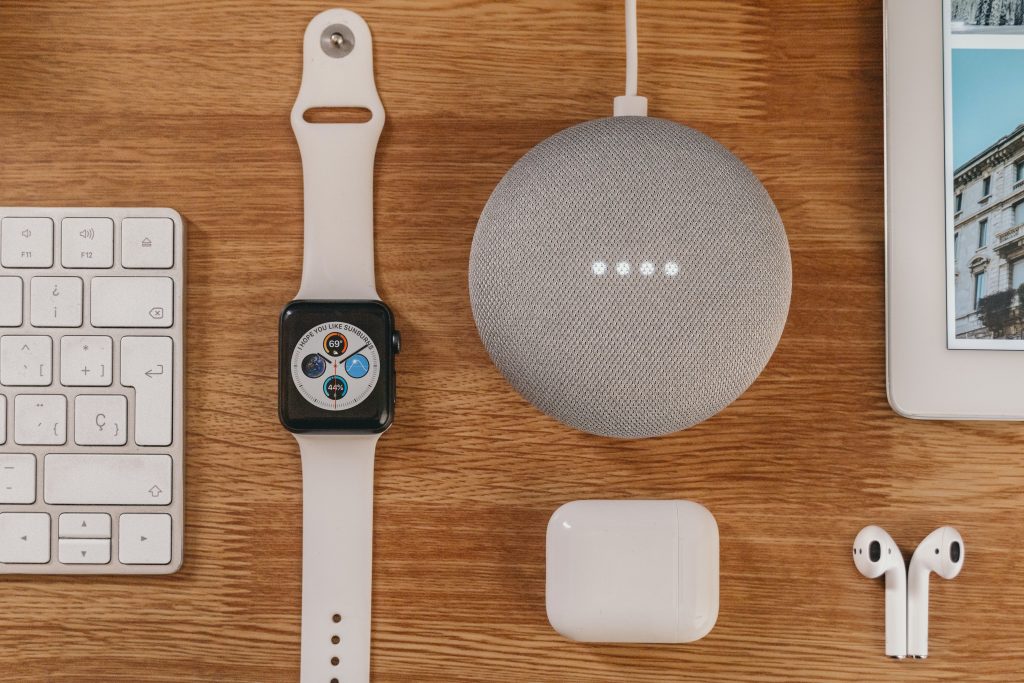Expand the reach of your business with the latest and most effective 2021 digital marketing trends.
Here, you’ll find:
- A breakdown of 7 digital marketing trends
- Ways to implement these trends into your current strategy
- Data showing which trends are on the rise
- How staying in the loop can give you an edge over competitors
Rarely does a month go by without a search engine or social media platform (or both!) announcing a major update. For advertisers, the effects can be slight or sweeping, and they often come without much of a heads up.
But marketing pros know change is the name of the game when it comes to today’s digital landscape. Trends come and go, but more and more they’re leaning towards things like personalized ads, convenient purchase processes, and authentic, natural-sounding content.
Keywords and audience targeting remain at the core of many search and social ads. But businesses can also layer in new marketing tactics to stand out from the competition.

Marketing teams and agencies must account for the ever-changing ways customers access information, communicate, and shop. (Image via Unsplash)
Digital marketing trends and the latest technology
Most online marketing agencies already use insights from analytics and artificial intelligence (AI) or machine learning to precisely target ads and deliver personalized promotions. Experts recommend combining these strategies with conventional search engine optimization (SEO) methods for best results.
An innovative digital marketing plan might unite a paid search campaign with pay-per-view Facebook video advertising or cross-platform social ads. In today’s business climate, marketing teams and agencies must account for the ever-changing ways customers access information, communicate, and shop. Here are 7 trends we’ve got our eyes on.
1. Look into micro-influencers
You’ve probably heard the term “micro-influencer,” since influencers have remained one of the biggest digital marketing trends of the last few years. If not, here’s the 411.
Micro-influencers are social media influencers with 10,000 or fewer followers (though some consider accounts of up to 30,000 as micro-influencers). They can generally be found on Instagram, though this content can spill over onto other apps as well.
Brands can partner with influencers for sponsored posts, where the influencer features your product or service in a post (that’s marked as an ad), often in exchange for a fee or free product.
While micro-influencers don’t have the follower counts of more big-time influencers, there are plenty of perks when it comes to working with them. They’re often more affordable than those with hundreds of thousands or millions of followers. And they often have more engaged audiences, too. They also tend to focus on more niche industries than broad lifestyle influencers.
Search Engine Watch reports that 71% of social media users are more likely to purchase products and services based on social media referrals. Moreover, 90% of people buy from brands they follow on social media, according to Marketing Dive. Depending on your industry, micro-influencers could be key to getting your brand added exposure and a bigger reach without breaking the bank.
2. Hop on the m-commerce train
Speaking of phone apps and Instagram, let’s talk about m-commerce. As you can probably guess, m-commerce stands for mobile commerce (AKA shopping on your smartphone), and it’s a growing trend. By 2022, e-commerce sales from smartphones will reportedly reach more than $432 billion.
Some brands are taking advantage of this rising trend through shoppable social media posts. A new Instagram integration with platforms like Shopify allows e-commerce stores to publish posts with links connected to the items shown in the image. Viewers can simply tap the image and be led straight to a product page to purchase right from their phones.
BigCommerce highlights just some of the benefits m-commerce offers, including:
- an omni-channel experience
- huge growth potential
- better customer experience
- a variety of payment options
Instagram Checkout, launched in 2019, allows users to purchase from Instagram without even leaving the app, making the transaction more seamless than ever. In mid-2020, Facebook Shops went live. The new feature is billed as a mobile-first shopping experience where businesses can create their own online store within the app.
3. Explore video ads
Video marketing has become one of the most effective ways to reach customers and achieve brand recognition. These videos can be served in places like social platforms, on blogs, as display ads, and on YouTube.
YouTube bumper ads are timed at six seconds and air before video content. These ads are particularly popular and effective for clients with limited video ad production budgets. Depending on available editing resources, you may want to consider using YouTube’s bumper machine. This tool generates brief ads from videos shorter than 90 seconds and has a few simple editing features.
Pay-per-view is available to video advertisers on Facebook. These placements resemble pay-per-click (PPC) search ads. Advertisers don’t pay for views of sponsored results or other search ads that don’t get clicked. A fee is only charged when a viewer watches more than 10 seconds of a video promotion.
Video ads allow you to quickly capture a viewer’s attention, get your message across, and highlight your brand aesthetic. As a bonus, your video doesn’t have to be feature film-quality to be a success as long as you’re targeting your audience effectively.
4. Consider chatbots
As a digital marketing trend, chatbots have come a long way — particularly when it comes to AI and personalization. Not only can chatbots provide 24-hour customer support, but they can help answer common customer Qs, freeing up your human employees for other tasks.
Forbes highlights how chatbots have skyrocketed in popularity during the last few years. And, with advancing AI technology, chatbots can become “smarter” as they gather more data.
Depending on the chatbot software you go with, you can create a variety of scenarios that may help prospects and clients find what they’re looking for, from contact information to knowledge-base articles.

The Home Depot’s AR app
5. Get familiar with augmented reality (AR)
AR shopping is another trend to watch out for in 2021 and beyond. Since more and more consumers are choosing online shopping, this type of technology allows customers to try on products virtually before they buy them.
All users have to do is upload a photo or simply point an app at their faces. Zenni Optical lets you see how you’d look in certain styles of glasses, while Maybelline lets you virtually try on a variety of makeup shades.
AR marketing involves creating AR brand experiences to increase brand awareness. One great example: The Home Depot’s AR app that, according to the brand, “helps you see products in your space in a few easy steps.”
6. Privacy-first laws dictate marketing tactics
As our recent privacy webinar points out, privacy changes are a big conversation happening in 2021. Google has initiated its third-party cookie phase-out, while Apple’s new iOS update features a pop-up that lets users opt out of app tracking.
Meanwhile, GDPR, California Consumer Privacy Act, and Brazilian General Data Protection Act are making it harder and harder for marketers to gather the much-needed data about their target audiences.
These changes shouldn’t come as a shock to marketers, as they’ve been brewing for a while. However, there are strategy changes that can help lessen the blow. These include:
- Making use of all the targeting tools at your disposal
- Leveraging workarounds when possible
- Restructuring your retargeting audiences
- Focusing on acquiring new leads through prospecting campaigns
- Continuing to invest in SEO, which is less affected by these changes

Companies with campaigns that highlight social initiatives or somehow “give back” may see more success than those that focus solely on sales. (Image via Unsplash)
7. Sincerity and sustainability are priorities
We’ve talked before about how leading with authenticity is key to gaining your audience’s trust. We’ve also shared data about how more consumers look for brands that align with their values. It’s not enough just to have a quality product or service: people want to partner with companies that stand for something.
Even though sustainability isn’t a new trend, it’s as popular as ever in 2021. Consumers are worried about their impact on the environment, giving marketers a tool to use when driving purchasing decisions.
These days, companies with campaigns that highlight social initiatives or somehow “give back” may see more success than those that focus solely on sales.
The takeaway
Much like Google beta releases, some digital marketing trends fall by the wayside, while others prove to have staying power.
By staying in the loop and testing out the latest marketing trends (which they make sense for your business, industry, and budget), you can show your audience that you’re paying attention to what’s on the horizon.
This post has been updated and was originally published in August 2019.

